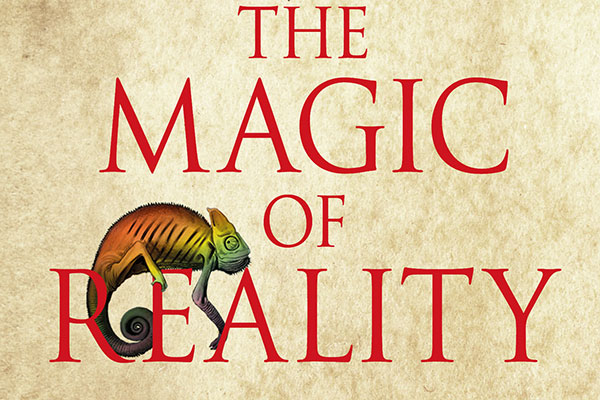The Magic of Reality
by Richard Dawkins
Despite being written by Richard Dawkins, I expected this book to be straightforward science, without much digging at religion or paranormal phenomena. I was wrong. Each chapter begins with a question, such as “Why are there so many different kinds of animals?” or “Why do bad things happen?” The chapters then outline old explanations, drawn from myths and religion from all corners of the world, followed by the scientific explanation (“Why are there really so many different kinds of animals?”). Dawkins has a go at an unnamed “charlatan” (Uri Geller) who passes his conjuring tricks off as supernatural magic, and coolly compares current religious stories with ancient, obsolete ones. His final chapter – “What is a miracle?” – instructs readers on how to rationally decide the most likely explanation for an interesting phenomenon.
The myths were really cool. There is one Tasmanian story about the first man being created with a kangaroo tail and no knees, so he can’t sit down, and a Maori one about earthquakes (with some poorly drawn moko on the illustration). The chapter on possible alien life didn’t have any ancient myths as aliens are a pretty recent concept, only emerging with the discovery of a material universe outside of Earth. Instead, there are stories from people claiming to have been abducted by aliens, and the possible (and creepy) explanations of sleep paralysis and implanted memory.
Although some of the material is pretty basic, the chapters usually progress from childlike, simple questions to their amazing scientific explanations and applications. “What is a rainbow?” turns into a fascinating explanation of the use of the colour spectrum to measure the distance of stars and galaxies from earth, and even the age of the universe.
I haven’t read a picture book in years and was surprised by how much I enjoyed it. I loved the beautiful and clear diagrams, photos, and illustrations of the myths and the science. What did your ancestor look like if you go back 185 million generations? Turn the page to find out! It’s great. The book also flops open in a satisfying way, resting flat on a table without needing to be held up.
Most of all, this book gave me a real appreciation of the extraordinary scientific knowledge we now mostly take for granted: Alfred Wegener’s idea of continental shift; Newton’s experiments with gravity, prisms, and light; Darwin’s radical idea of evolution; atomic theory; the “round earth” theory; the big bang … concepts that are now common knowledge, but are the result of thousands of years of human curiosity and inquiry.



